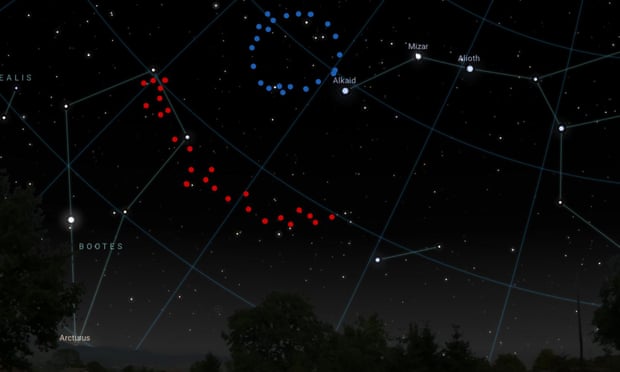Two vast cosmic megastructures have been discovered – the Big Ring and the Giant Arc – which challenge the assumption that the universe is homogenous on the largest scales.
Guardian takes takes up the story

The so-called Big Ring has a diameter of about 1.3bn light years, making it among the largest structures ever observed. At more than 9bn light years from Earth, it is too faint to see directly, but its diameter on the night sky would be equivalent to 15 full moons.
The observations, presented on Thursday at the 243rd meeting of the American Astronomical Society in New Orleans, are significant because the size of the Big Ring appears to defy a fundamental assumption in cosmology called the cosmological principle. This states that above a certain spatial scale, the universe is homogeneous and looks identical in every direction.
“From current cosmological theories we didn’t think structures on this scale were possible,” said Alexia Lopez, a PhD student at the University of Central Lancashire, who led the analysis. “We could expect maybe one exceedingly large structure in all our observable universe.”
Zooming out on the universe should, in theory, reveal a vast, featureless expanse. Yet the Big Ring is one of a growing list of unexpectedly large structures. Others include the Giant Arc, which appears just next to the Big Ring and was also discovered by Lopez in 2021. Cosmologists calculate the current theoretical size limit of structures to be 1.2bn light years, but the Big Ring and the Giant Arc, which spans an estimated 3.3bn light years, breach this limit. (continued at link)